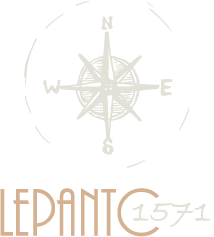The church of Panagia Panaxiotissa
The Byzantine church of the Dormition of Mary (Panagia Panaxiotissa) is situated in a picturesque landscape among olive and pine trees, 2 klms north of the village Gavrolimni (Municipal district of Halkeia); it is located on the old road joining Gavrolimni to Naupaktos next to a khan from the Ottoman period which lent the name to the present-day village Khania Gavrolimnis. The epithet “Panaxiotissa” possibly unique in the Orthodox nomenclature, has been explained as “the one who was deemed worthy of everything” (axios =worthy). The monument is dated by most scholars in the second half of the 10th century.
Architecture
The church is of the cross-in-square architectural type and belongs to the category of «Helladic transitional churches». Three semi-circular apses protrude on the eastern side and there is a narthex on the west side with three entrances. On the roof is clearly discerned the shape of the cross on the centre of which relies the dome; on the tips of the cross's antennas are formed pediments whereas the corner compartments have a lower roof. The interior of the church is covered with vaults. The church is built with limestone, mortar, rows of bricks (single, double or multiple) whereas a common decorative element are the stripes of indentations made of bricks. The elegant dome, made by really charismatic masons, is built only with bricks and constitutes a superb specimen of harmony of the ceramic decorative elements (indentation stripes surround the windows, built of bricks, whereas a frieze with diamond-shaped ceramic elements runs all around). The interior of the church in the Byzantine period was decorated with frescoes, of which only one, namely Sts. Constantine and Helena, are extant today. A considerable amount of visitors is gathered every year at the mass which takes place on the second day of Easter. Treats and traditional dances follow the mass.

The early Christian basilica of the Holy Trinity (Hagia Triada)
On the hill of Hagia Triada, on the position of ancient Chalkis, there was built a paleo-Christian basilical church of impressive dimensions, covering a surface of 1000 square meters without the annexes. It dates from the 6th century A.D. Furthermore storage rooms, dining room, kitchen, cells and a cemetery have been archaeologically located. A second church of the 10th century was built in the ruins of the cenral aisle of the initial basilica when this became derelict. The size of the complex led sholars to believe that this was an episcopal church serving the needs of a larger geographic area and population.
The well-maintained Byzantine fortification followes the older one of the classical wall of the acropolis of Chalkis. Among the finds of the digs, the hoard of Byzantine coins of the 10th century stands out.
Mount Varassova
Caves and churches of Varassova
Mount Varassova is situated at the Southwestern part of the Prefecture of Aetoloakarnania, in the Municipal District of Chalkeia of the Municipality of Naupaktia. In the Byzantine period it was known as the “Holy Mountain of Aetolia”, as it developed into an important ascetic center from the 10th century onwards and in the years after the Ottoman conquest. Among the caves-ascetic abodes the most renowned one is the cave of the Holy Fathers, bearing interesting frescoes of the 10th and 11th centuries, reflecting the art of the monuments of Cappadocia and Southern Italy. According to sholarly research, Varasova was situated on the course of the “big route”, which in the middle Byzantine period started from Trapezous in the Pontic region, passed through Constantinople and Thessaloniki and ended in South Italy. It takes about two hours trecking and climbing to reack the cave of the Holy Fathers. The Byzantine monastery of St. Nicholas of Varassova is built in a cave opening at the souther side of the Monastery of St. Nicholas of Varassova mountain, between the villages Kato Vassiliki and Kryoneri. Access is possible from the sea and it takes an uphill trecking of about 20 minutes. The monastery was deserted and it was restored recently, after meticulous excavation. It was a sturdy, fortification type of building with a long functioning life (9th-19th centuries). It consisted of a two-storeyed cell building with a passage at the entrance of the cave, from where one had access to a small plateau with a little single-aisled vaulted church, a blessed water depository and auxiliary rooms. Another cave, about 12 meters above the first one is particularly interesting, as it had a double role: it functioned both as refuge of the monks in cases of pirate attacks and as a space where monks could isolate themselves for meditation reasons. The monastery is accessible to visitors by small boats from Kato Vassiliki and harbouring at the specially formed small harbour at the bottom of the rocky mountainside.

